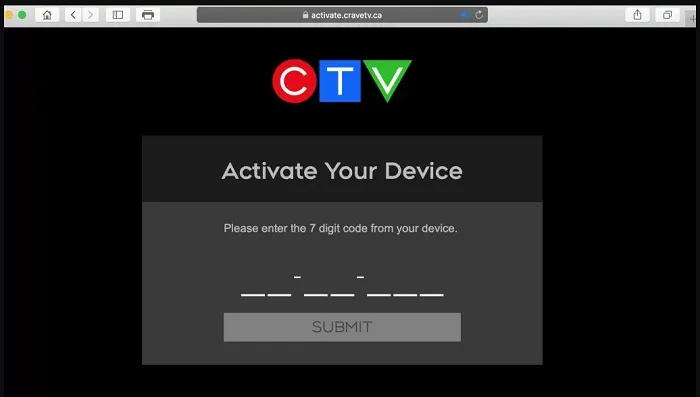The clandestine corridors of the dark web harbor a myriad of illicit marketplaces, yet few command as much infamy as brians club and briansclub. These shadowy domains have entrenched themselves in the cybercriminal underworld, orchestrating nefarious financial dealings that elude conventional scrutiny. From purloined credit card data to meticulously structured fraud schemes, these entities have cemented their presence as formidable bastions of digital malfeasance.
The Genesis of brians club and briansclub
Conceived in the murky recesses of cyberspace, brians club and briansclub emerged as premier hubs for the illicit trade of compromised financial instruments. Their inception, cloaked in subterfuge, marked the genesis of an ecosystem where cybercriminals transact with impunity. Propelled by an insidious network of hackers and data brokers, these platforms amassed an unparalleled repository of stolen credentials, fostering an intricate web of fraudulent operations.
Modus Operandi of brians club and briansclub
The operational framework of brians club and briansclub is meticulously orchestrated to obfuscate its digital footprint. Encrypted communications, anonymity-preserving tools, and the utilization of cryptocurrencies render these marketplaces virtually impervious to conventional enforcement mechanisms. Transactions occur within an esoteric enclave, wherein buyers procure stolen credit card data, colloquially referred to as “dumps” and “CVV2s,” for nefarious undertakings.
The Infamous Data Breach of 2019
A paradox befitting the cybercriminal landscape, brians club and briansclub suffered a cataclysmic breach in 2019. Ironically, the infiltrators commandeered an estimated 26 million compromised credit card records, subsequently disseminating the purloined data to financial institutions and law enforcement agencies. This incursion momentarily disrupted the platform’s operations, yet the resilient infrastructure of these syndicates facilitated a rapid resurgence.
The Economic Ramifications of brians club and briansclub
The pervasive influence of brians club and briansclub extends beyond the dark web, precipitating profound economic repercussions. Financial institutions incur staggering losses, consumers grapple with identity theft, and regulatory frameworks struggle to counteract the subversive tactics employed by these syndicates. The insidious proliferation of stolen credentials exacerbates systemic vulnerabilities, necessitating an incessant evolution of cybersecurity protocols.
The Escalating Sophistication of Fraudulent Schemes
Augmenting their arsenal of malevolent stratagems, brians club and briansclub have perpetually refined their methodologies. The advent of AI-driven fraud detection systems has catalyzed a corresponding escalation in countermeasures devised by cybercriminals. Techniques such as card testing, synthetic identity fraud, and automated laundering mechanisms exemplify the adaptive resilience of these illicit networks.
How Cybercriminals Utilize Stolen Data
Once exfiltrated, stolen credentials undergo intricate processing before being monetized. Cybercriminals employ automated scripts to validate compromised data, ensuring viability prior to sale. Subsequently, these assets are disseminated across dark web forums, auctioned to the highest bidder, or employed in large-scale fraud schemes involving e-commerce fraud, money laundering, and identity theft.
The Role of Cryptocurrency in Money Laundering
Integral to the operational longevity of brians club and briansclub is the utilization of cryptocurrencies as an anonymizing financial conduit. Bitcoin and privacy-centric altcoins facilitate obfuscation, enabling malefactors to orchestrate illicit transactions beyond the purview of regulatory oversight. Tumbling services and decentralized exchanges further complicate forensic investigations, rendering asset tracing an arduous endeavor.
The Cat-and-Mouse Game with Law Enforcement
Despite concerted efforts by cybersecurity agencies and financial watchdogs, brians club and briansclub persistently elude interdiction. The advent of anonymization tools such as Tor and VPNs bolsters the evasive capabilities of these entities. Furthermore, the decentralized nature of their operations ensures that even in the wake of domain seizures or server disruptions, alternate nodes promptly reconstitute the marketplace.
The Psychological Manipulation of Victims
Beyond the fiscal ramifications, the psychological toll inflicted upon victims is immeasurable. Identity theft survivors endure protracted legal battles, financial destitution, and a pervasive sense of vulnerability. The insidious machinations of brians club and briansclub erode societal trust in digital transactions, engendering an atmosphere of perpetual apprehension.
Why brians club and briansclub Remain Unstoppable
The resilience of brians club and briansclub is predicated upon an intricate lattice of decentralization, encryption, and cybercriminal collaboration. Unlike traditional financial institutions, these dark web conglomerates operate within an unregulated digital expanse, leveraging technological advancements to perpetuate their illicit endeavors.
The Underground Economy Thriving on Stolen Credentials
The ramifications of brians club and briansclub extend far beyond their immediate clientele. An entire clandestine economy thrives on stolen financial data, encompassing fraudulent e-commerce platforms, counterfeit documentation syndicates, and orchestrated money-laundering networks. The insidious tentacles of this underground economy infiltrate legitimate financial systems, exacerbating systemic vulnerabilities.
Emerging Countermeasures Against Dark Web Marketplaces
The contemporary cybersecurity landscape is witnessing the advent of AI-driven threat intelligence, biometric authentication, and behavioral analytics as countermeasures against dark web marketplaces like brians club and briansclub. These innovations augment fraud detection efficacy, albeit at the cost of an incessant technological arms race between cybersecurity professionals and cybercriminals.
The Ethical Dilemma in Cybersecurity Vigilantism
An intriguing paradigm shift has emerged wherein cybersecurity vigilantes infiltrate and dismantle dark web marketplaces. Ethical hackers and white-hat operatives deploy honeypots, execute counter-hacks, and subvert malicious infrastructure to combat entities like brians club and briansclub. While controversial, these extrajudicial interventions have demonstrated efficacy in mitigating cybercriminal activities.
The Future of Financial Cybercrime
The trajectory of financial cybercrime underscores an inevitable confluence between AI automation and fraudulent enterprise. The proliferation of deepfake technology, machine learning-driven fraud, and AI-generated synthetic identities heralds an era of unprecedented digital deception. Within this evolving landscape, entities akin to brians club and briansclub will persistently adapt, necessitating perpetual vigilance.
Consumer Strategies to Mitigate Exposure
For individuals seeking to mitigate exposure to cybercrime, proactive cybersecurity hygiene is imperative:
- Utilize Multi-Factor Authentication (MFA): Bolster account security by requiring multiple verification layers.
- Employ Virtual Private Networks (VPNs): Encrypt digital traffic to thwart interception by cybercriminals.
- Monitor Financial Statements Rigorously: Scrutinize bank transactions for anomalies indicative of fraud.
- Engage in Digital Minimalism: Limit online data dissemination to reduce exploitable vulnerabilities.
Legislative Challenges in Combatting Cybercrime
The jurisdictional ambiguity of the dark web renders legislative interventions an arduous undertaking. Extraterritoriality, encryption rights, and data privacy statutes pose formidable barriers to prosecuting perpetrators affiliated with brians club and briansclub. International cooperation remains a linchpin in dismantling such networks, yet regulatory discordance persists.
Final Thoughts on the Persistence of Dark Web Marketplaces
Despite regulatory scrutiny, technological advancements, and law enforcement intervention, the resilience of brians club and briansclub underscores an unsettling reality—cybercrime is an inexorable facet of the digital age. The continual evolution of fraud tactics necessitates an equally dynamic response from cybersecurity professionals, policymakers, and vigilant consumers.
FAQs About brians club and briansclub
- What are brians club and briansclub?
They are dark web marketplaces specializing in the trade of stolen credit card data and fraudulent financial instruments. - How do brians club and briansclub operate anonymously?
These platforms leverage encryption, cryptocurrencies, and decentralized hosting to evade detection. - Can law enforcement shut down brians club and briansclub permanently?
While temporary disruptions occur, the decentralized nature of these entities enables rapid reconstitution. - What should consumers do if their credit card data is stolen?
Immediately report the compromise to financial institutions, monitor transactions, and implement fraud alerts. - Are cryptocurrencies facilitating the growth of cybercrime?
Cryptocurrencies provide anonymity that emboldens illicit activities, yet regulatory frameworks are evolving to mitigate abuse.





